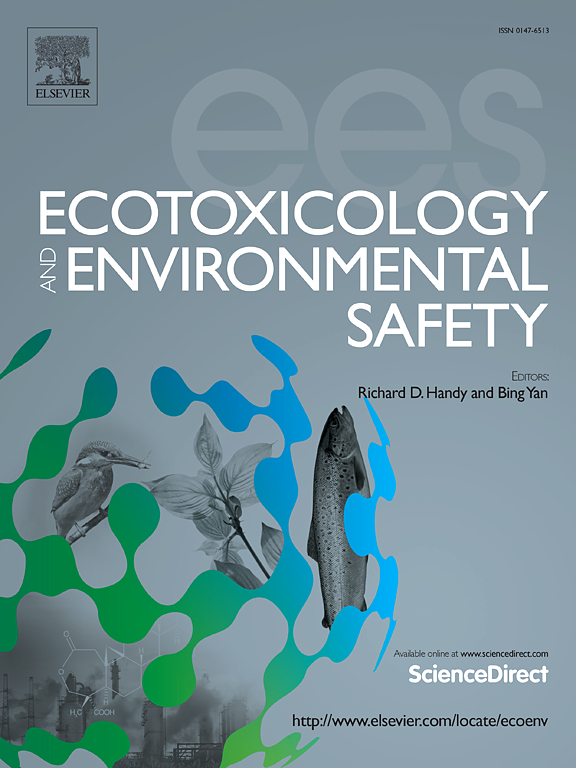Development of swimming speed-based biomarker reveals interactive toxicity of TCEP and TCPP in amphibian larvae
IF 6.2
2区 环境科学与生态学
Q1 ENVIRONMENTAL SCIENCES
引用次数: 0
Abstract
Tris(2-chloroethyl) phosphate (TCEP) and tris(2-chloro-1-methylethyl) phosphate (TCPP) are increasingly co-detected in various aquatic environments, yet their combined toxicity remains poorly understood. In this study, we investigated the effects of chronic (20–23 days) exposure to TCEP and TCPP, both individually and in combination, at concentrations that included and exceeded environmentally relevant levels (3, 30, and 300 μg/L) on Polypedates megacephalus tadpole swimming performance. Using an information-theoretic approach, we revealed an interaction pattern: high TCEP concentrations significantly diminished TCPP's effects on swimming speed. A significant positive correlation between swimming speed and muscle acetylcholinesterase (AChE) activity established swimming speed as a reliable non-invasive indicator of neurotoxicity. We developed the swimming speed decline rate (SDR) as a novel biomarker, validated through its correlation with integrated biomarker response. The SDR assessment revealed that current environmental concentrations pose relatively low risks to tadpole swimming performance, except in wastewater treatment facilities where moderate risks were identified. Our findings established a validated non-invasive tool for neurotoxicity assessment.
基于游动速度的生物标志物的开发揭示了TCEP和TCPP对两栖动物幼虫的相互作用毒性
三(2-氯乙基)磷酸(TCEP)和三(2-氯-1-甲基乙基)磷酸(TCPP)越来越多地在各种水生环境中被共同检测到,但它们的联合毒性仍然知之甚少。在这项研究中,我们研究了长期(20-23天)单独或联合暴露于TCEP和TCPP,浓度包括或超过环境相关水平(3,30和300 μg/L)对巨型头足跖蝌蚪游泳性能的影响。利用信息论方法,我们揭示了一种相互作用模式:高浓度的TCPP显著降低了TCPP对游泳速度的影响。游泳速度与肌肉乙酰胆碱酯酶(AChE)活性显著正相关,证实游泳速度是一种可靠的无创神经毒性指标。我们开发了游泳速度下降率(SDR)作为一种新的生物标志物,并通过其与综合生物标志物反应的相关性进行了验证。特别提款权评估显示,目前的环境浓度对蝌蚪游泳能力构成相对较低的风险,除了在废水处理设施中确定的中等风险。我们的发现建立了一种有效的非侵入性神经毒性评估工具。
本文章由计算机程序翻译,如有差异,请以英文原文为准。
求助全文
约1分钟内获得全文
求助全文
来源期刊
CiteScore
12.10
自引率
5.90%
发文量
1234
审稿时长
88 days
期刊介绍:
Ecotoxicology and Environmental Safety is a multi-disciplinary journal that focuses on understanding the exposure and effects of environmental contamination on organisms including human health. The scope of the journal covers three main themes. The topics within these themes, indicated below, include (but are not limited to) the following: Ecotoxicology、Environmental Chemistry、Environmental Safety etc.

 求助内容:
求助内容: 应助结果提醒方式:
应助结果提醒方式:


